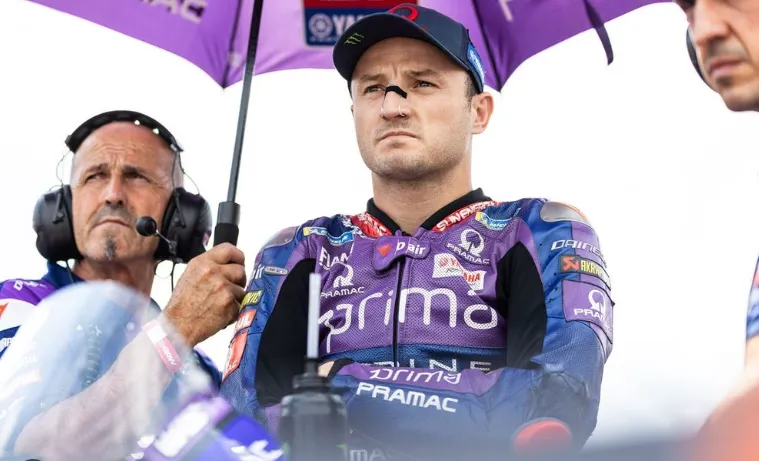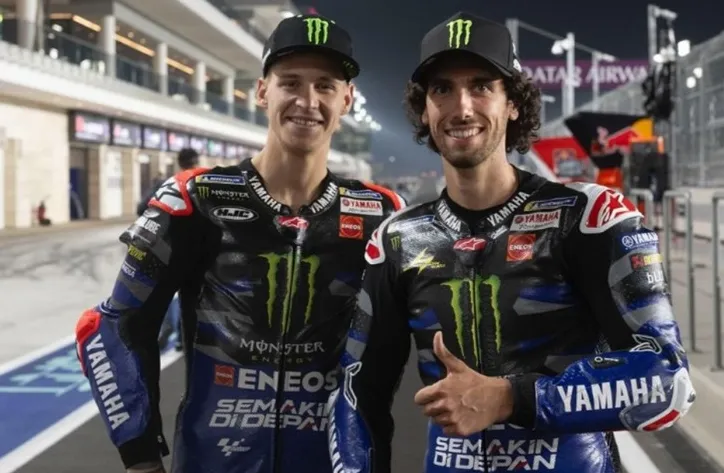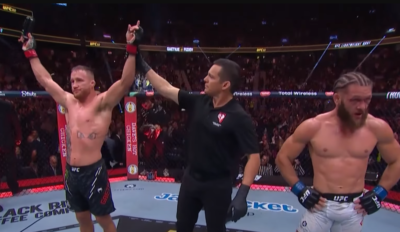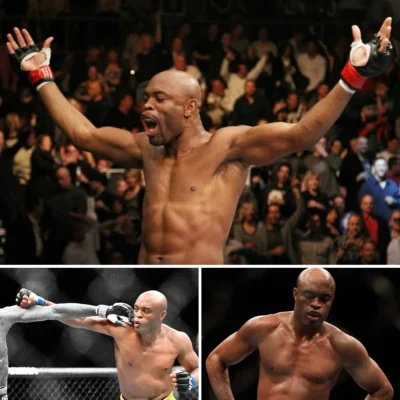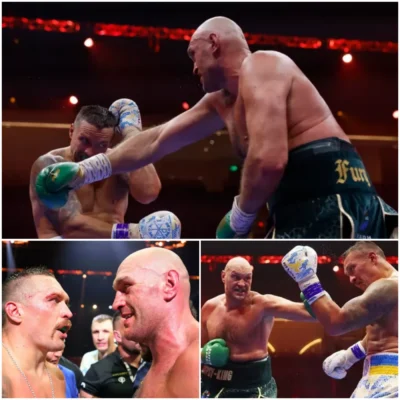
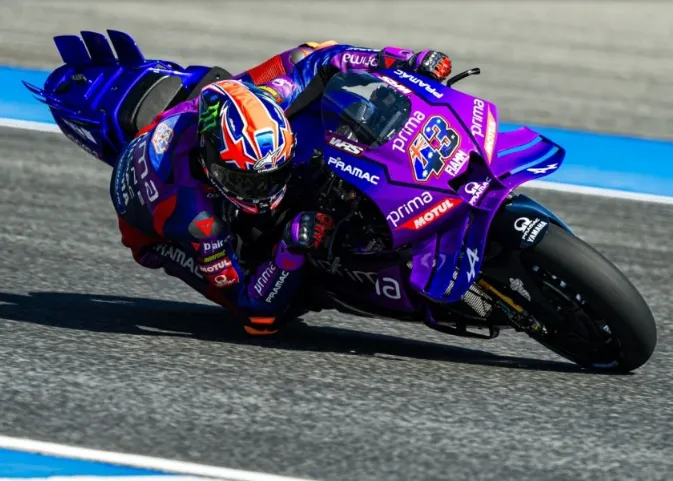
Jack Miller’s Jaw-Dropping Confession: Can He Handle MotoGP’s Insane 300km/h Speeds After a Break?
In the high-octane world of MotoGP, few things are taken for granted. Even for seasoned veterans like Jack Miller, the sensation of returning to a prototype racing bike after a winter break can feel like an entirely new experience. In a revealing interview with the Gypsy Tales podcast, the Australian rider opened up about how hitting speeds of 300km/h after months off the bike triggers an overwhelming reaction—especially from the eyes.
The Eyes Have It: Relearning Speed After the Off-Season
According to Jack Miller, it’s not the body or the bike that needs the most adjustment after a break—it’s the rider’s vision. “It’s the eyes,” Miller emphasized. “Winter break gets you – you go away, go back to Australia, I didn’t touch a bike from the Barcelona test in November to the first week of February.”
That’s nearly three months without pushing the envelope of physics. And when you return to MotoGP testing at Sepang or Qatar, those first few laps can be disorienting. “You haven’t done 300km/h since then,” he said, referring to the top speeds reached during test sessions.

Why Vision Is the First to Fail
Vision is a rider’s most essential sense. At 300km/h, the eyes are responsible for processing critical information in milliseconds—braking points, apex angles, throttle control cues, and the positioning of competitors. When a rider spends weeks or months off the bike, their ocular system loses this rapid-fire processing ability.
“You’ve got things going through your head,” Miller explained. “I’ve been doing it for eons but still—‘Will I remember how to ride? Can I do what I did three months ago?’”
This mental spiral of self-doubt isn’t uncommon, even for elite riders. But Miller insists that it always starts with how the eyes readjust to high speeds, particularly during the initial runs in Sepang, a staple track for pre-season testing.
Sepang: Where Eyes Adjust and Fears Settle
For years, Sepang International Circuit in Malaysia has been one of the main proving grounds for riders to shake off the rust. Its long straights and technical corners test both man and machine. It’s also the place where Miller feels the full impact of his seasonal break.
“Always in Sepang,” he said, referencing where the mental fog first clears. It’s in this environment, under the heat and humidity, that the eyes begin to recalibrate. Riders start feeling the motion, the balance, and the spatial awareness that is second nature mid-season.
Bold keywords: Sepang MotoGP test, rider mental conditioning, high-speed training
The Physical Toll of Not Riding
While the focus of Miller’s story revolves around visual readjustment, there’s also the physicality of riding a MotoGP machine. Each rider loses a degree of muscle memory, reflex speed, and endurance during the off-season. This makes the first laps more mentally and physically exhausting than one might expect.
Without the G-force, throttle snap, and grip feedback, the body becomes unfamiliar with the sensations that define a race weekend. Combined with slow eye adjustment, it creates an almost alien experience.
“It’s like trying to remember how to walk,” Miller joked. “Everything feels slightly off until it clicks.”
Yamaha Pramac: A New Chapter with Familiar Challenges
Now riding for Pramac Yamaha, Jack Miller is facing these challenges with a new machine. Each manufacturer has its own bike philosophy, and switching brands means re-tuning your brain to a completely different behavior pattern.
Whether it’s braking zones, throttle delivery, or the weight distribution of the Yamaha versus his previous KTM, every small detail matters. The pressure to adapt quickly while recalibrating eye coordination adds an extra layer of intensity.
Miller’s Method: Overcoming the Early Struggles
When asked how he overcomes these hurdles, Miller offered a surprisingly simple answer: repetition and patience. The first laps are never perfect. The eyes squint, the lines are wide, and the braking feels rushed. But lap by lap, his brain starts syncing with the machine again.
“The key is to stay relaxed and not overthink it,” he said. “You’ll panic if you try to be perfect right out of the gate.”
By lap 10 or 12, the muscle memory returns. By the end of the day, Miller can hit his marks with a degree of confidence that seemed impossible that morning. It’s a transformation that happens in every garage, with every rider, every year.
Vision Science: Why Eyes Are So Vital at 300km/h
Scientific studies back up Miller’s claims. At high speeds, peripheral vision, depth perception, and motion sensitivity all get tested. Your visual cortex needs to process a flood of stimuli, much more rapidly than during regular driving or even amateur-level racing.
MotoGP riders essentially train themselves to operate in a hyper-visual environment. The winter break disrupts that fine-tuned ability, causing a short-term lag in responsiveness and judgment.
Sports psychologists and eye-training specialists have started working more closely with teams to help riders improve these skills year-round. Vision drills using strobe lights, VR simulations, and focus tracking are now commonplace in off-season training routines.
More Than Just a Shock to the System
Miller’s story highlights the broader emotional toll of MotoGP. It’s not just about keeping the body fit; it’s about maintaining a state of visual and mental alertness that very few sports require. Going from holiday mode in Australia to full-throttle testing in Malaysia is like stepping into another world.
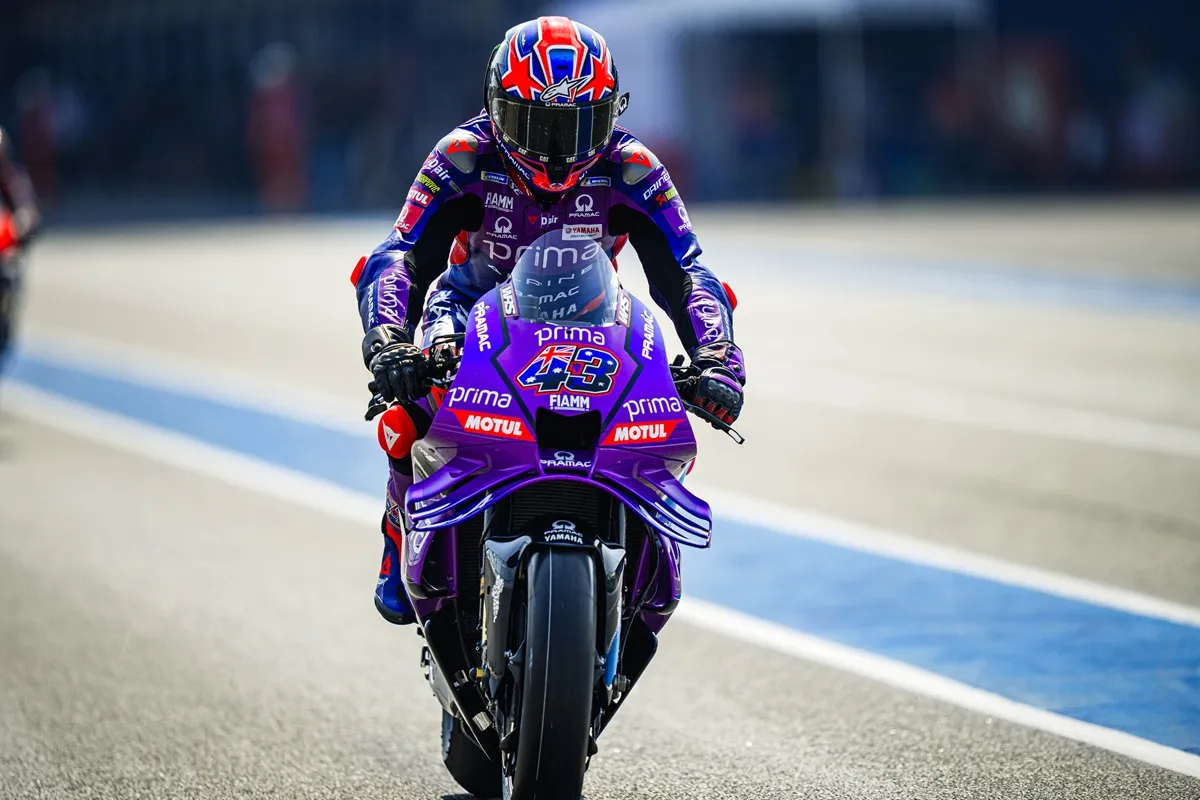
“There’s no f****** way this will stop,” Miller said with a laugh, reflecting on his dedication to the sport. “First exit before the eyes adjust—it’s always chaos.”
That chaos, however, is part of the thrill. The adrenaline surge that riders feel after that first exit from the pits is what keeps them coming back year after year. It’s also why fans love riders like Jack Miller—raw, honest, and unfiltered.
A Lesson for Up-and-Comers
For young riders looking to break into MotoGP, Miller’s insight is invaluable. It’s easy to focus on fitness, bike setup, and lap times. But ignoring how your eyes and brain react to extreme speed can be a serious setback.
Whether it’s Moto3, Moto2, or wild card entries into the premier class, aspiring racers need to prioritize sensory training as much as physical conditioning.
What’s Next for Miller in 2025?
Jack Miller’s switch to Yamaha in 2025 represents a significant turning point in his career. While adjusting to a new team and machinery, his understanding of the fundamentals—like eye adaptation—gives him a psychological edge.
His goal isn’t just to survive the season, but to climb back on the podium and fight for wins. If history is any indicator, Miller thrives under pressure. And with a better grasp of how to reset his senses each pre-season, he might just surprise the field once again.
As the 2025 MotoGP season roars to life, all eyes—pun intended—will be on Jack Miller as he puts theory into practice, one lap at a time.








